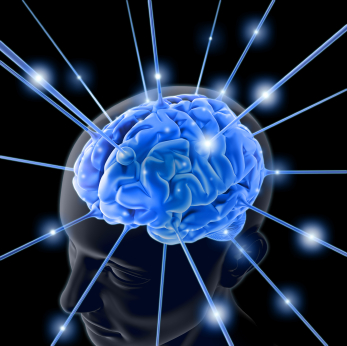Understanding Rheumatoid Arthritis: A New Path to Healing
What Is Rheumatoid Arthritis and Why Does It Matter?
At the Chronic Conditions Center in Bethel Park, PA, we see many patients struggling with rheumatoid arthritis every single day. Rheumatoid arthritis is a condition that causes pain, swelling, and stiffness in the joints. Unlike regular arthritis that comes from wear and tear, rheumatoid arthritis happens when your immune system attacks your own body by mistake. This condition affects over 1.3 million Americans, and many of them feel frustrated with traditional treatment options.
Furthermore, rheumatoid arthritis doesn’t just affect one joint. Instead, it typically attacks joints on both sides of your body at the same time. For example, if your right hand hurts, your left hand probably hurts too. This pattern helps doctors identify the condition and separate it from other types of joint problems.
How Rheumatoid Arthritis Affects Your Daily Life
Living with rheumatoid arthritis creates many challenges. First, morning stiffness makes it hard to get out of bed and start your day. Additionally, simple tasks like opening jars, buttoning shirts, or holding a coffee cup become difficult and painful. Many people with this condition also feel extremely tired, even after a full night of sleep.
Moreover, the disease doesn’t stay the same all the time. Some days feel better than others. During flare-ups, the pain and swelling get much worse. Between flare-ups, symptoms might calm down a bit. However, without proper treatment, the condition usually gets worse over time and can damage joints permanently.
The emotional impact is just as real as the physical pain. Many patients tell us they feel frustrated because they can’t do activities they once enjoyed. Similarly, they worry about becoming dependent on others for help. These feelings are completely normal and valid.
Why Many People Feel Disappointed with Drug-Only Treatment
Traditional medicine typically treats rheumatoid arthritis with powerful medications. Doctors usually prescribe disease-modifying antirheumatic drugs (DMARDs), biologics, or steroids. While these medications can help reduce inflammation, they often come with serious side effects that concern many patients.
Consequently, people taking these drugs frequently experience nausea, liver problems, increased infection risk, and stomach issues. Some medications require regular blood tests to monitor for dangerous side effects. Therefore, many patients feel like they’re trading one set of problems for another.
In addition, these medications often cost thousands of dollars each month. Even with insurance, the copays can be overwhelming. Because of this, some people can’t afford to take their prescribed medications consistently.
Furthermore, medications typically only address symptoms rather than the root causes of inflammation. They work to suppress the immune system, but they don’t help the body heal itself. As a result, patients must continue taking these drugs indefinitely, often with increasing doses over time.
Many patients also feel frustrated because their doctors spend only a few minutes with them during appointments. Instead of exploring lifestyle factors or alternative approaches, they simply adjust medication dosages. This approach leaves people feeling like they’re just a prescription pad rather than a whole person.
The Rise of Holistic Approaches to Rheumatoid Arthritis
Because of these frustrations, more people are seeking holistic approaches to managing rheumatoid arthritis. A holistic approach means looking at the whole person, not just the diseased joints. This includes considering diet, stress levels, sleep quality, exercise habits, and emotional health.
At our center, we believe the body has an amazing ability to heal when given the right support. Rather than just suppressing symptoms, we focus on reducing inflammation naturally and supporting the body’s own healing processes. This approach takes more time and effort, but many patients find it more effective and sustainable in the long run.
Importantly, holistic care doesn’t mean abandoning all conventional medicine. Instead, it means combining the best of different approaches to create a personalized treatment plan. Some patients reduce their medication needs significantly, while others use holistic therapies alongside their prescriptions for better results.
How Chiropractic Care Helps Rheumatoid Arthritis
Chiropractic care plays a crucial role in managing rheumatoid arthritis holistically. Many people think chiropractors only treat back pain, but they actually help with joint problems throughout the entire body. Through gentle adjustments, chiropractors improve joint alignment and movement.
When joints move properly, they experience less stress and inflammation. Additionally, proper alignment helps reduce pain signals going to the brain. This means patients often need less pain medication after starting regular chiropractic care.
Moreover, chiropractors use special techniques designed specifically for people with rheumatoid arthritis. These gentle methods don’t involve forceful cracking or twisting. Instead, they use light pressure and mobilization techniques that feel comfortable even for inflamed joints.
Our chiropractors also teach patients exercises and stretches to do at home. These movements help maintain flexibility and prevent joints from becoming stiff. Regular practice helps patients stay more active and independent in their daily lives.
Functional Medicine: Finding the Root Causes
Functional medicine represents another important piece of the holistic approach to rheumatoid arthritis. Unlike conventional medicine that treats symptoms, functional medicine practitioners search for underlying causes of inflammation and immune system problems.
First, functional medicine doctors run comprehensive tests to check for hidden issues. These might include food sensitivities, gut health problems, nutrient deficiencies, or toxin exposures. Surprisingly, many of these factors contribute to rheumatoid arthritis symptoms without people realizing it.
For example, many patients discover they have “leaky gut,” a condition where the intestinal lining becomes damaged. This allows partially digested food particles and toxins to enter the bloodstream. Consequently, the immune system attacks these foreign substances, which can trigger or worsen autoimmune conditions like rheumatoid arthritis.
Additionally, functional medicine focuses heavily on nutrition. Certain foods increase inflammation, while others reduce it. By identifying and eliminating trigger foods, many patients experience significant symptom improvement. Anti-inflammatory diets rich in vegetables, healthy fats, and clean proteins help calm the immune system naturally.
Furthermore, functional medicine doctors often find that patients have nutrient deficiencies that make symptoms worse. Common deficiencies include vitamin D, omega-3 fatty acids, and minerals like magnesium. Correcting these deficiencies through high-quality supplements helps the body function better and reduces inflammation.
Stress management also receives attention in functional medicine. Chronic stress increases inflammation throughout the body and can trigger rheumatoid arthritis flare-ups. Therefore, practitioners help patients develop stress-reduction techniques like meditation, deep breathing, or gentle yoga.
The Power of Laser Therapy for Rheumatoid Arthritis
Laser therapy has emerged as an exciting treatment option for rheumatoid arthritis. This approach uses specific wavelengths of light to penetrate deep into tissues and reduce inflammation at the cellular level. Best of all, it’s completely painless and has no side effects.
During laser therapy sessions, patients simply relax while a device directs healing light energy to affected joints. The treatment typically takes only 10-15 minutes per session. Most people describe feeling a gentle warmth during the procedure.
How does it work? The laser light stimulates cells to produce more energy and repair themselves faster. Additionally, it increases blood flow to the treated area, bringing more oxygen and nutrients while removing waste products. This process naturally reduces swelling and pain.
Many patients notice improvements after just a few sessions. They report being able to move more easily and experiencing less morning stiffness. Furthermore, the benefits tend to build over time with regular treatments.
Laser therapy also helps damaged tissues heal more completely. Over time, this can prevent some of the joint damage that typically occurs with rheumatoid arthritis. While it doesn’t cure the condition, it significantly improves the quality of life for many patients.
Soft Tissue Therapies Make a Real Difference
Soft tissue therapies address the muscles, tendons, and ligaments surrounding affected joints. When someone has rheumatoid arthritis, these soft tissues often become tight, knotted, and painful. They can even restrict joint movement and make symptoms worse.
Massage therapy helps by relaxing tight muscles and improving circulation. However, massage for rheumatoid arthritis requires special training and techniques. Our therapists use gentle methods that don’t aggravate inflamed joints.
Additionally, myofascial release therapy targets the fascia, the connective tissue that surrounds muscles. When fascia becomes restricted, it creates pain and limits movement. By releasing these restrictions, patients gain better mobility and experience less discomfort.
Trigger point therapy represents another valuable soft tissue approach. Trigger points are tight knots in muscles that cause pain in other areas. By releasing these points, therapists can reduce widespread pain patterns common in rheumatoid arthritis.
Moreover, soft tissue work helps the body remove inflammatory chemicals from affected areas. This happens because massage and manual therapy improve lymphatic drainage, which is the body’s waste removal system. Better drainage means less buildup of inflammatory substances around joints.
Bringing It All Together: A Comprehensive Treatment Plan
The real power comes from combining all these approaches into one comprehensive treatment plan. At the Chronic Conditions Center, we create personalized programs that address each patient’s unique needs and circumstances.
A typical patient might receive chiropractic adjustments twice weekly to improve joint function. At the same time, they work with our functional medicine team to heal their gut, eliminate food triggers, and correct nutrient deficiencies. Meanwhile, they receive laser therapy sessions to reduce inflammation and speed healing.
Furthermore, regular soft tissue therapy keeps muscles relaxed and promotes good circulation. Our team also provides education about lifestyle factors like sleep, stress management, and gentle exercise. This comprehensive approach addresses rheumatoid arthritis from every angle.
Importantly, we monitor progress carefully and adjust treatments as needed. Some approaches work better for certain patients than others. By staying flexible and responsive, we help each person find the combination that works best for them.
Real Results People Are Experiencing
Many patients tell us they wish they had discovered this holistic approach sooner. One patient reported that after six months of combined treatment, she reduced her medication by 75% with her doctor’s approval. Another patient said he could play with his grandchildren again without constant pain.
Similarly, several patients have shared that they no longer wake up with severe morning stiffness. Others mention being able to return to hobbies they had given up, like gardening, knitting, or playing guitar. These quality-of-life improvements mean everything to people who had felt limited by their condition.
While results vary from person to person, most patients experience meaningful improvements within the first few months. Some notice changes within weeks, especially reduced pain and better mobility. Long-term benefits continue to develop as the body heals and inflammation decreases.
Taking the First Step Toward Healing
If you’re struggling with rheumatoid arthritis and feeling frustrated with conventional treatment alone, a holistic approach might be right for you. The journey starts with a comprehensive evaluation to understand your unique situation and health history.
During your first visit, we take time to listen to your story and understand your goals. We don’t rush through appointments or simply write prescriptions. Instead, we partner with you to create a realistic, effective treatment plan that fits your life.
Living with rheumatoid arthritis doesn’t mean accepting a life of pain and limitation. By combining chiropractic care, functional medicine, laser therapy, and soft tissue treatments, many people find relief they never thought possible. Your body has remarkable healing abilities when given the right support and care.
At the Chronic Conditions Center in Bethel Park, PA, we’re committed to helping people with rheumatoid arthritis reclaim their lives. We believe everyone deserves to feel their best and live without constant pain. If you’re ready to explore a different approach, we’re here to help guide you on your healing journey.


